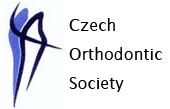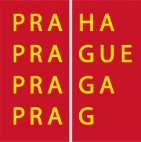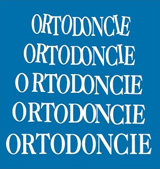

|
|
|
|
|
| Main Information | |
| Congress Venue | |
| Important dates | |
| Congress Course | |
| Keynote lectures | |
| Short lectures | |
| Poster section | |
| Preliminary schedule | |
| Social programme | |
| Registration | |
| Visa requirements | |
| CoViD-19 information | |
| Accommodation | |
| Instructions for authors | |
| Online Abstract form | |
| Partnership and exhibition | |
| Gold partner | |
| Bronze partner | |
| Partner | |
| Documents | |
| Contacts | |
|
|
|
About Prague
|
|
|
|
|
 The Congress is organised by the Czech Orthodontic Society |
|
|
|
|


The Congress is supported by: Czech Academy of dental esthetics Czech Society of dentoalveolar surgery |
|
|
|
|
 The congress is under patronage of the Charles University in Prague |
|
|
|
|
 The congress is held with the financial support of the capital Prague |
|
Long-term survival and prognosis of autotransplanted teeth
Ole Schwartz
Keynote lecture - Friday, May 20, 2022

About author:
Education:
- 1972 - Certificate in Dentistry, Royal Dental College, Copenhagen, Denmark
- 1979 - Ph.D Thesis: Immunological and Clinical Aspects of Allotransplantation of Teeth in Humans
- 1983 - Certificate in Oral & Maxillofacial Surgery, Copenhagen University, Denmark
- 1975 - Research associate, Department of Oral and Maxillofacial Surgery, University of Copenhagen, Denmark
- 1980 - Research associate, University of Los Angeles, California, USA
- 1981 - Senior research associate, University of Copenhagen, Denmark
- 1984 - Associate professor in Oral and maxillofacial surgery at University of Copenhagen
- 1993 - Head of department, Department of Oral & Maxillofacial Surgery, Copenhagen Community Hospitals HS, University Hospitals of Copenhagen.
- 2000 - Head of department, Department of Oral & Maxillofacial Surgery, University Hospital, Rigshospitalet, Copenhagen
- 2011 - Senior consultant, Department of Oral & Maxillofacial Surgery, University Hospital, Rigshospitalet, Copenhagen
- 2011 - Private practice part time, oral- and maxillofacial surgery, Lyngby.
- 1984 - René Le Fort Award, Collegio Brazileiro Cirurgia e Traumatologica Bucco-Maxillo-Facial, Bauru, Brazil
- 1991 - SIDO World Award, Italy
- 75 scientific articles in peer-reviewed journals, with special focus on topics of transplantation of teeth
- “Atlas of replantation and transplantation of teeth”
- “Textbook and colour atlas og tooth impactions, diagnosis, treatment and prevention”,
- “Textbook and colour atlas of traumatic injuries of the teeth”.
Autotransplantation of teeth, experimental and clinical research including cryopreservation. Allotransplantation of Teeth, experimental and clinical research including tissue typing, immunological monitoring and and donor-specific immunosuppression. Maxillofacial rehabilitation including bone grafting Anvanced implantology
Abstract of the lecture:
The optimal criterias of a successful autotransplanted tooth includes: alveolar growth and eruption in synchrony with neighbouring teeth, and the capacity of the soft tissue of the donor tooth to induce normal periodontal ligament, obliteration of the pulp, and further root formation, formation of new alveolar bone and gingiva at the recipient site, including the capacity of the grafted tooth to be moved with orthodontic forces.
During the last 30 years, a number of long-term studies of autotransplantation of teeth, including Meta-analysis and Life-table analysis of several large controlled data materials (more than 4000 transplantations, followed from 3 to 47 years) have revealed a series of relevant prognostic factors of various significance on the long term “survival”. With the limitations such comparison of different data materials demand, some of the factors with potentially significant impact on long-term survival will be presented, including: Root development of the graft, tooth type, endodontic treatment, splinting, antibiotics, experience of the surgeon, in private practice vs. in university clinics, pre- and postoperative orthodontic treatment, postoperative prosthodontic treatment, and other factors of relevance to the long term satisfactory survival and function of transplanted teeth.
Even cryopreserved teeth can be autotransplanted, with documented function and normal pulp and periodontal ligament similar to fresh grafts for more than 30 years after autotransplantation, with initial cryopreservation of the tooth graft for 5 years.
Complications like ankylosis, necrosis of the obliterated pulp and invasive cervical resorption has been demonstrated to appear many years after tooth transplantation. It is possible to treat obliterated pulp with endodontics, however ankylosis and invasive root resorption will eventually lead to loss of the grafted tooth.
Autotransplantation of teeth present a long-term survival, function and aestetically satisfactory results after more than 20-40 years, comparable to - and in some aspects superior to - dental implants. However, transplantation of premolars to the incisor maxillary region may compose a major challenge to the transplantation team, including orthodontist, surgeon and prostodontist, achieving predictable long lasting pleasing aestetic results to the patients. Such recent long-term results will be presented from Copenhagen, and related to previous publications.
Back to the list of keynote lectures 




